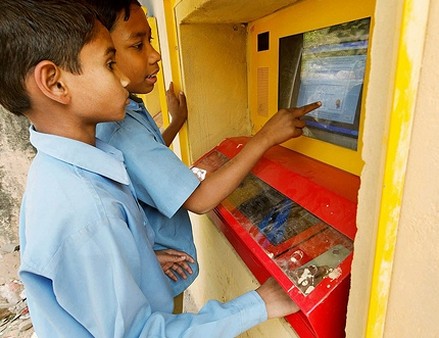Albert Einstein once said, “The true sign of intelligence is not knowledge, but imagination.”
TED 2013 Prize Winner Sugata Mitra’s idea of building a school in the clouds epitomizes the way in which the human imagination can push boundaries to solve global issues.
Mitra, a professor of educational technology at Newcastle University, describes his idea as the future of learning. In a world driven by ideas and imagination, he understands the importance of looking foward in the field of education. Ken Robinson, international advisor on education in the arts, believes that schools are in some ways killing creativity, and he urges everyone to re-imagine what role schools should play in educating the citizens of tomorrow.
Mitra’s project, known as self-organized learning environments (SOLE), encourages students to learn from each other using resources and mentoring from “the cloud.”
The cloud is a relatively new concept that enables easy collaboration between teachers and students across the planet. The National Institute of Standards and Technology characterizes the cloud as on-demand self-service, broad network access, and resource pooling.
SOLE was the result of a creative and unusual experiment performed by Mitra. As a professor of technology, Mitra was responsible for teaching people how to write computer programs. He observed that young children quickly picked up how to use the computer, just by playing around on it. He wondered if children in the slums close to New Delhi, India would also be able to learn in the same manner.
He made a hole in the wall, close to a bank ATM in New Delhi, and stuck a computer through it, which was programmed in English. He then let the children play around with the computer. Eight hours later, the children had taught themselves how to browse the internet, despite knowing little English and nothing about the world wide web.
Inspired by this discovery, Mitra decided to carry out this experiment 300 miles away from Delhi in a remote village. By removing his experiment from the city, he eradicated the chances of a software engineer passing by, and teaching the children about the internet while they played with the computer.
Surprisingly, when Mitra returned several months later he found children playing games on the computer. When he pointed out that it only worked in English, Mitra was shocked to hear that the children had taught themselves English in order to use it. They also mentioned that they wanted a faster processor and a better mouse. Mitra carried out the experiment in several parts of India, and consistently found the same astonishing results.
Intrigued, Mitra conducted further research. He concluded that in a period of just nine months, children left alone with a computer in any language reached the same level of competency as an office clerk in the West.
This finding has enormous implications in the way today’s technology can be used to create educational opportunities for people in parts of the world which might not have sufficient infrastructure and human resources to obtain a good education. With the declining costs of computing technology juxtaposed with the increasing permeation of internet accessibility, learning from the cloud has never been easier.
Nicholas Negroponte, founder of the OLPC Project (One Laptop Per Child) posed an important question: “Is knowing obsolete?” In times where the ability to multiply numbers in your head doesn’t account for much, because we have computers everywhere to do that for us, the pertinent skills to have are the ability to think critically and read discerningly. It is these skills that Mitra hopes the children will acquire by using technology to teach themselves.
Mitra talks about how learning should emerge as product of educational self-organization. He envisions a future of learning where the teacher sets the process in motion, stands back, and watches in awe as learning emerges. Ultimately, SOLE stands as a pillar of light, illuminating the minds of children who would otherwise have never received the chance to indulge in learning and education.









